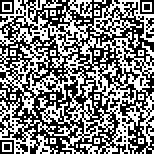| 引用本文: | 刘天一,胡清洋,东雪,辛彬,王欢欢,李中.基于计算机辅助药物设计从中药天然产物库中挖掘儿童神经母细胞瘤靶点极光激酶A抑制剂[J].中国现代应用药学,2023,40(22):3104-3116. |
| LIU Tianyi,HU Qingyang,DONG Xue,XIN Bin,WANG Huanhuan,LI Zhong.Computer-aided Drug Design: Mining Neuroblastoma Targets in Children Aurora A Kinase Inhibitors from a Natural Product Library of Traditional Chinese Medicine[J].Chin J Mod Appl Pharm(中国现代应用药学),2023,40(22):3104-3116. |
|
| |
|
|
| 本文已被:浏览 2087次 下载 586次 |

码上扫一扫! |
|
|
| 基于计算机辅助药物设计从中药天然产物库中挖掘儿童神经母细胞瘤靶点极光激酶A抑制剂 |
|
刘天一1, 胡清洋2, 东雪2, 辛彬2, 王欢欢1, 李中1
|
|
1.大连市妇女儿童医疗中心(集团)药剂科, 辽宁 大连 116012;2.大连医科大学药学院, 辽宁 大连 116044
|
|
| 摘要: |
| 目的 利用计算机辅助药物设计技术从中药天然产物库中挖掘极光激酶A(Aurora A kinase,AURKA)抑制剂。方法 搭建类药性筛选、药动学预测、分子对接、分子动力学(molecular dynamics,MD)模拟于一体的药物筛选平台,从中药化合物数据库中挖掘AURKA抑制剂并通过MD模拟进行验证。结果 采用计算机辅助药物设计方法从Bai-TCM数据库6 220种中草药的47 696种中药天然化合物中筛选出5种能与AURKA结合的化合物。经MD模拟验证发现Compound X能够在AURKA抑制活性口袋中形成稳定的受体-配体二元复合物,在Compound X存在的情况下,AURKA-MYCN复合物的稳定性明显降低。结论 结合多种虚拟筛选技术从中药天然产物数据库发现神经母细胞瘤治疗靶点MYCN的AURKA抑制剂Compound X。 |
| 关键词: 极光激酶A 神经母细胞瘤 计算机辅助药物设计 分子动力学模拟 分子对接 |
| DOI:10.13748/j.cnki.issn1007-7693.20232493 |
| 分类号:R965.2 |
| 基金项目:大连市医学科学研究计划项目(22Z12007) |
|
| Computer-aided Drug Design: Mining Neuroblastoma Targets in Children Aurora A Kinase Inhibitors from a Natural Product Library of Traditional Chinese Medicine |
|
LIU Tianyi1, HU Qingyang2, DONG Xue2, XIN Bin2, WANG Huanhuan1, LI Zhong1
|
|
1.Department of Pharmaceutics, Dalian Women and Children's Medical Group, Dalian 116012, China;2.College of Pharmacy, Dalian Medical University, Dalian 116044, China
|
| Abstract: |
| OBJECTIVE Neuroblastoma(NB) is a prevailing pediatric extracranial solid tumor that accounts for 10%-15% of all childhood cancer-related fatalities. Despite significant strides made in NB therapy through multimodal approaches, the survival rate of high-risk NB patients remains at approximately 50%. Consequently, there is an urgent need to identify novel molecular targets for NB treatment. Recent studies have shown that MYCN oncogene amplification is present in about 25% of NB cases and is a crucial determinant of poor prognosis for high-risk NB patients. Since MYC family proteins, including MYCN, are inherently disordered proteins, MYCN lacks a defined ligand binding site along with a large protein-protein interaction surface. Current treatment approaches for MYCN-amplified NB patients do not include direct targeting of MYCN itself, since the absence of a “drugable” pocket renders it challenging. Notably, no direct MYC-targeting drugs are currently available. There is an existing association between Aurora A kinase(AURKA) and MYCN, whereby they form a complex to fortify MYCN stability. However, MYCN is inherently unstable, with a half-life of only 30 min, but AURKA intervenes by facilitating its stability through a direct protein-protein interaction, hence protecting it from proteasomal degradation. This interaction potentially augments tumor cell proliferation and invasiveness. Notably, AURKA has been verified as a transcriptional target of MYCN. The present study endeavors to employ computer-aided drug design technology to probe AURKA inhibitors discerned from a natural product library of traditional Chinese medicine(TCM), thereby identifying a novel drug for treating NB. METHODS Collected from the YaTCM database, a total of 47 696 natural compounds from TCM were subjected to preprocessing including protonation, deionization, hydrogenation, stereoisomerism, conformation generation, and energy minimization. Of these, 58 048 compounds were initially screened as potential ligands for the library. Utilizing “Lipinski Ro5” and “Verber Ro3” guidelines, 22 227 hit compounds were selected from the library that met the screening criteria. Initially, crystal structures of AURKA and its inhibitor AA35 were downloaded from the RCSB PDB database. The spatial coordinates of AA35 were set as the center of the binding pocket for AURKA, and a 10 Å * 10 Å * 10 Å space around the pocket was designated as the active space. A comprehensive drug screening platform integrating lead-likeness filtering, pharmacokinetic prediction, molecular docking, flexible docking, and molecular dynamics(MD) simulations were established to excavate potential aurora kinase A inhibitors from the TCM compound library, which were further validated by MD simulations. RESULTS A grand total of 6 220 Chinese herbal remedies had been meticulously curated within the YaTCM database. Out of these, an impressive 47 696 Chinese herbal monomers had undergone a rigorous series of flexible docking tests, resulting in the selection of the top ten molecules with the most favorable docking scores. The aforementioned molecules underwent AMDE parameter and toxicity predictions. It was discovered that with the exception of a few compounds such as Tryptophane, 3'-Methoxydaidzein, and Burttinol D(which might elicit liver toxicity), 3'-Methoxydaidzein and Pratensein(which might elicit kidney toxicity), and 3-Deoxysappanone B(which had moderate oral toxicity), as well as Tryptophane(with an oral bioavailability of less than 50%), five compounds including Compound X, (+)-Sesamin dicatechol, Tuberosin, Abrine, and Maackiain, displayed favorable pharmacokinetic parameters and low toxicity predictions. Moreover, all of these compounds exhibited a high binding affinity with the inhibitor active pocket of AURKA. In this study, Compound X, despite its cumbersome name, was referred to as “Compound X”. Upon focusing on Compound X as the subject of investigation, it was discovered that its phenolic framework could readily interact with the hydrophobic cavity constituted of hydrophobic amino acids, namely TYR199, VAL182, LEU178, LEU208, and VAL206. Notably, Compound X could partake in Pi-Pi interactions with TYR199 and create hydrogen bonds with HIS201, GLU175, and LYS166. Computational studies via MD simulations confirmed that Compound X could form a stable receptor-ligand complex with the receptor. Impressively, the inclusion of Compound X significantly reduced the stability of the AURKA-MYCN complex. CONCLUSION This study concludes that Compound X can be used as an AURKA inhibitor for the treatment of NB, which is a novel finding based on the combination of various virtual screening techniques from the natural product database of TCM. |
| Key words: Aurora A kinase neuroblastoma computer aided drug design molecular dynamics simulation molecular docking |
|
|
|
|
